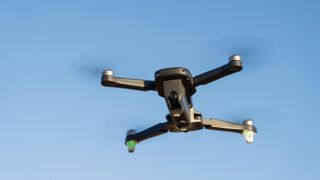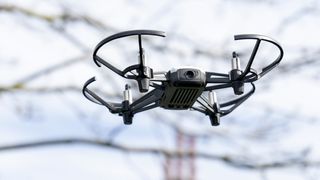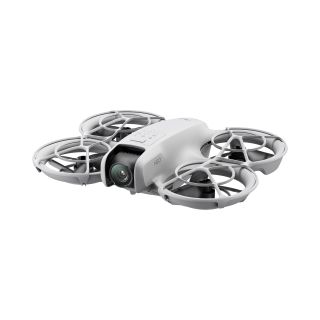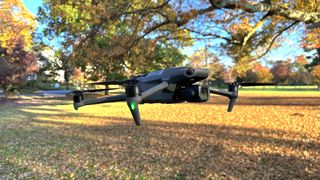Discover Pandipedia
Pandipedia is the world's first encyclopaedia of machine generated content approved by humans. You can contribute by simply searching and clicking/tapping on "Add To Pandipedia" in the answer you like. Learn More
Expand the world's knowledge as you search and help others. Go you!

Lighthouse lights are unique because lights shining along a coast must differ from one another[1]. Not two lights exactly alike should be placed near one another unless they are close and intended to be used together[1].
The necessity for distinctiveness has given rise to the employment of different well-marked peculiarities in lights, simple in character, that may be easily and immediately recognized by the navigator[1]. Lights can be fixed, showing continuously, or not show continuously, but are broken by periods of darkness[1]. With these characteristics, the system in operation is understood by all nautical men[1].
Let's look at alternatives:
- Modify the query.
- Start a new thread.
- Remove sources (if manually added).
- Request a manual search from our human research team.

The purpose of art criticism is to analyze and evaluate works of art, examining elements like aesthetics, intention, and cultural context to interpret their meaning and significance. Criticism fosters understanding and encourages public discourse around art, ultimately shaping perceptions and influencing the art market and movements[2][3].
Art critics serve as intermediaries between artists and audiences, providing insights that help contextualize the artistic experience. By questioning and interpreting artworks, they promote critical thinking and dialogue, contributing to a deeper appreciation of art within its social and cultural frameworks[4][5].
Let's look at alternatives:
- Modify the query.
- Start a new thread.
- Remove sources (if manually added).
- Request a manual search from our human research team.
Get more accurate answers with Super Search, upload files, personalised discovery feed, save searches and contribute to the PandiPedia.

Natural selection is a fundamental process driving evolution, characterized by specific mechanisms that result in population adaptation over time. These mechanisms include variation, differential reproduction, heredity, and environmental interaction. Each of these components plays a crucial role in shaping the dynamics of natural selection within biological populations.
Variation and Its Role

One of the primary mechanisms behind natural selection is variation among individuals within a population. Variations can manifest as differences in physical characteristics, behaviors, and physiological responses. These variations often arise from random mutations in an organism's genetic material, which can lead to new traits appearing in a population. For example, members of any species might differ in size, coloration, or the ability to resist diseases, all driven by random genetic changes[3][8].
As Charles Darwin noted, 'The many slight differences which appear in the offsprings of the same parents may be called individual differences,' emphasizing how these variations are critical for natural selection to occur[5]. If no variation exists, then there can be no selection, as there would be nothing for the environment to act upon.
Differential Reproduction

Natural selection operates on the principle of differential reproduction, which states that individuals with advantageous traits are more likely to survive and reproduce. This process means that those individuals best suited to their environment will leave more offspring than those with less advantageous traits[2][3]. For instance, in the case of the evolution of the peppered moth, the color variation allowed certain moths to blend in with their surroundings better than others, thereby reducing predation and increasing their chances of survival and reproduction[9].
Over generations, this leads to a greater proportion of these advantageous traits in the population, as 'organisms that are better adapted to an environment will survive and reproduce,' effectively spreading beneficial alleles in their offspring[8][9].
Heredity and Genetic Transmission

Heredity is the mechanism by which advantageous traits are passed from parents to offspring. When organisms reproduce, they pass on their DNA, which contains the genetic instructions for various traits[3][4]. This transmission of characteristics ensures that beneficial adaptations become more common in successive generations. Over time, the cumulative effect of natural selection can lead to significant changes in populations, as seen in adaptations suited to particular environmental conditions[6][8].
Darwin’s insights into heredity, combined with modern genetics, have clarified that mutations create new genetic variants, and the subsequent selection of these variants shapes the genetic makeup of future generations[4].
Environmental Interaction
Natural selection does not occur in isolation; it is intimately connected to the environment in which organisms live. The environment presents various challenges, including predation, competition for resources, and changes in climate or habitat. For example, when giraffes evolved longer necks, it was primarily because this trait allowed them to access food that other herbivores could not, thereby giving them a competitive advantage[2].
Furthermore, environmental pressures can shift over time, leading to changes in which traits are favorable. For instance, industrial pollution altered the primary coloring of tree bark, allowing darker-colored peppered moths to thrive due to better camouflage[7]. This interaction highlights how natural selection operates in response to environmental conditions, leading to changes in the population's traits.
Consequences of Natural Selection
The long-term effects of natural selection can include speciation, where new species emerge from common ancestors due to sustained genetic divergence driven by selection pressures[8][10]. This can arise when populations become isolated and adapt to different environments, ultimately resulting in distinct species with unique adaptations tailored to their niches.
Additionally, natural selection can explain phenomena like antibiotic resistance in bacteria, where the selective pressure from antibiotic use leads to a rapid evolutionary change in bacterial populations, favoring those with mutations that confer resistance[4][5].
Conclusion
Natural selection is a complex yet elegant mechanism consisting of the interplay between variation, reproduction, heredity, and environmental interaction. It explains how species adapt and evolve over time, leading to the rich tapestry of life we observe today. Through these processes, natural selection shapes the survival and reproductive success of organisms, fostering biodiversity and driving the evolution of new species. Understanding these mechanisms helps clarify the overall framework of evolutionary theory as first articulated by Darwin and advanced by modern science.
Let's look at alternatives:
- Modify the query.
- Start a new thread.
- Remove sources (if manually added).
- Request a manual search from our human research team.

The model that uses self-reflection is Claude 3.7 Sonnet Thinking, which is described as having 'thinking mechanisms' such as long Chain-of-Thought (CoT) with self-reflection. This model is included in a discussion on Large Reasoning Models (LRMs) that demonstrate promising results across various reasoning benchmarks[1].
Moreover, the paper highlights that despite the sophisticated self-reflection mechanisms, these models still fail to develop generalizable problem-solving capabilities beyond certain complexity thresholds[1]. Thus, self-reflection is a key feature of Claude 3.7 Sonnet Thinking within the context of reasoning models.
Let's look at alternatives:
- Modify the query.
- Start a new thread.
- Remove sources (if manually added).
- Request a manual search from our human research team.
DJI Mini 4K
A budget-friendly drone offering excellent value with 4K video capabilities, ideal for beginners due to its lightweight design and easy controls[1].
DJI Mini 3
A slightly pricier option with superior battery life and slightly better camera performance, suitable for those willing to invest more for improved low-light conditions[1].
DJI Mini 4 Pro
A top choice for beginners featuring advanced obstacle avoidance, exceptional camera quality, and user-friendly controls[4][8].
Ryze Tello
An affordable, featherweight drone great for learning the basics of flight, controlled via smartphone app with engaging programming features[1][5].
Autel Evo Nano+
A strong competitor to DJI's Mini series, offering impressive low-light performance and robust features like obstacle avoidance[1][3][8].
DJI Mini 2 SE
An excellent drone that balances quality with price, featuring user-friendly QuickShots modes and a lightweight build under the FAA registration weight[7].
Potensic Atom
A budget drone that provides decent flight performance and essential features for beginners, though with limited camera quality[7].
HoverAir X1 Pro
A compact and beginner-friendly drone designed for easy flight and excellent subject tracking, perfect for capturing selfies[1][3].
BetaFPV Cetus X Kit
A complete FPV kit, perfect for those looking to explore first-person flight, including goggles and a transmitter for immersive experiences[1][3].
DJI Mini 3 Pro
An excellent mid-range option known for its advanced camera features and superior flight stability, great for those ready to advance past entry-level drones[4][8].
Potensic A20 Mini
A simple, easy-to-use mini drone ideal for kids and absolute beginners, featuring basic flight functions without camera capabilities[5].
Ruko F11 GIM2
A heavier beginner drone that offers decent performance and comes with extra batteries, providing good value for learning to fly[7].
Autel Nano+
A compact drone that offers fantastic camera performance and stability in flight, staying below registration requirements[3][8].

DJI Air 3S
A high-performance drone suitable for videographers, featuring great low-light abilities and advanced control features, but involves FAA registration[8].
DJI Mavic 3 Classic
Excellent for serious videographers, featuring advanced camera capabilities and robust flight performance, though not suited for beginners due to its price[8].
Holy Stone HS210
A lightweight, affordable drone suitable for young children or novices looking for simple flying experiences without complex features[2].

Holy Stone HS175D
A robust option that offers solid ease of use and good flight duration, ideal for those learning the basics in a slightly larger format[2].
Potensic Atom SE
Offers a range of flight features at an affordable price point, making it appealing for beginners who want to experiment with flying[5].
DJI Air 2S
A solid choice for those ready to invest in premium features, including excellent camera quality and smart flight modes, though it requires registration[4][8].
Let's look at alternatives:
- Modify the query.
- Start a new thread.
- Remove sources (if manually added).
- Request a manual search from our human research team.
Let's look at alternatives:
- Modify the query.
- Start a new thread.
- Remove sources (if manually added).
- Request a manual search from our human research team.
Get more accurate answers with Super Search, upload files, personalised discovery feed, save searches and contribute to the PandiPedia.

Tech products become sticky through several key elements. First, they must demonstrate genuine value to users, making them integral to daily routines. Products that solve real problems, provide seamless onboarding, and enhance user satisfaction encourage regular engagement and habit formation[1][4][6].
Moreover, employing strategies like personalized experiences, intuitive interfaces, and engaging content fosters deeper connections with users. Gamification and social features can also create a sense of community, further increasing stickiness by making the product enjoyable and valuable to revisit consistently[1][3][5]. Ultimately, understanding user needs and continuously improving based on feedback is crucial for maintaining a sticky user base[2][6].
Let's look at alternatives:
- Modify the query.
- Start a new thread.
- Remove sources (if manually added).
- Request a manual search from our human research team.

The themes of 'Pride and Prejudice' by Jane Austen include love, pride, prejudice, class, and family dynamics.
Love: The novel emphasizes the importance of marrying for love rather than for wealth or status. Elizabeth Bennet and Mr. Darcy's relationship epitomizes true love overcoming various social obstacles, showcasing the journey toward understanding and mutual respect. Austen critiques marriages based solely on financial security, illustrating this through characters like Charlotte Lucas and Lydia Bennet, who prioritize independence and reputation over genuine affection[1][3].
Pride and Prejudice: The title itself encapsulates these themes, with characters like Darcy embodying pride due to his social rank, while Elizabeth displays prejudice based on her initial judgments of him. Their respective biases create significant misunderstandings that they must overcome for their relationship to evolve[1][3][4].
Class: Austen addresses the rigid social hierarchy of the Georgian era, criticizing how status affects characters’ interactions and relationships. Characters like Lady Catherine and Mr. Collins are portrayed as embodying the negative attributes of class obsession, while Darcy's character development illustrates that virtue transcends social status[2][3].
Family: The family unit is central to the narrative, influencing the characters' choices and societal standing. The Bennet sisters' relationships, particularly among Jane and Elizabeth, highlight the strength of familial support, while the negative example of Lydia's actions shows how family reputation can impact individual futures[2][4].
These intertwined themes create a rich tapestry that critiques societal norms while exploring individual character growth throughout the novel.
Let's look at alternatives:
- Modify the query.
- Start a new thread.
- Remove sources (if manually added).
- Request a manual search from our human research team.
Kevin M. Murphy 'won the John Bates Clark Medal' in economics. The medal was awarded to an outstanding American economist under the age of 40.
Let's look at alternatives:
- Modify the query.
- Start a new thread.
- Remove sources (if manually added).
- Request a manual search from our human research team.
Early Light Sources: Wood, Coal, and Candles
The evolution of lighthouse illumination has undergone significant transformations over the centuries, progressing from rudimentary methods to sophisticated technologies[1]. Initially, lighthouses relied on simple techniques, such as wood and coal fires, to provide light for mariners[1]. These early systems, while marking a starting point, were fraught with limitations[1]. The fire-towers, as they were known, required constant watchfulness and labor to maintain, and their efficiency was highly susceptible to weather conditions[1]. When a mariner most wanted its aid it might not be visible to him[1]. The enormous consumption of fuel, the labor of conveying it to the top of the tower, and of feeding the fire, and the exposure to heat and weather to which the attendant must have been subject[1]. These fluctuations would render such a light so uncertain[1]. Moreover, much of the light was misdirected, with a significant portion escaping upwards into the sky, diminishing its effectiveness for seafarers[1].
Candles also saw use in some early lighthouses[1]. However, similar to wood and coal, they presented their own set of challenges[1]. Candles were frequently discarded in favor of coal fires, and more recently of oil[1]. Whether wood , coal, candles, or oil were the illuminating agent, uncertainty and very limited efficiency marked the system, and the lights could only be serviceable to mariners creeping anxiously close in along the coast[1].
The Transition to Oil and the Argand Burner
A pivotal moment in lighthouse illumination arrived with the introduction of oil lamps[1]. This transition marked a significant improvement over the inconsistent and smoky flames of wood and coal fires[1]. The invention of the argand burner in the latter part of the last century enabled a very remarkable improvement in lighthouse illumination to be introduced[1]. This innovative design, featuring a concentric wick and a glass chimney, facilitated a more complete combustion of the oil vapor, resulting in a brighter and more stable light[1]. The cylindrical tube caused a current of air to impinge upon the internal surface of the ring of flame[1].
This advancement paved the way for the catoptric system of lighting, which utilized metallic reflectors behind the argand lamps to direct and intensify the light[1]. With reflectors this object is attained by reflecting forward the rays thrown onto a highly polished surface[1]. This arrangement allowed for a more focused beam, increasing the range and visibility of the lighthouse[1].
Fresnel Lenses and the Dioptric System
Further innovation came with the lenticular apparatus on the principle of Fresnel's celebrated invention offered another means of greatly improving the lights[1]. This system, known as dioptric, employed lenses and prisms to refract and concentrate the light, achieving greater efficiency than reflectors alone[1]. In the dioptric method, all the rays emitted by one large flame are intercepted by glass lenses or prisms at a short distance from the flame, and are bent or refracted, so that they issue from the lighthouse lantern in a compact beam[1]. This method enabled a single, powerful light source to project a beam visible over great distances, revolutionizing lighthouse technology[1].
Gas and Electric Light: Modern Illuminants
In more recent times, gas and electricity have emerged as viable alternatives for lighthouse illumination[1]. Gas: Seeing the results achieved by gas as an illuminator of our streets and houses, it is not surprising that efforts should have been made to apply it for lighthouse purposes[1]. Mr. J.R. Wigham inaugurated the gas system for lighthouses by the introduction of his patent gas-burner at the Howth Bailey Lighthouse , near Dublin[1]. Electricity has been adapted to meet the requirements of fixed, intermittent, revolving, and group flashing lights, with success in every case[1].
The use of electric light in lighthouses began with trials in 1857[1]. Holmes's apparatus was termed a magneto - electric machine, and, after some careful experiments with it at the South Foreland lighthouse in 1858 , the results obtained… practically established the fitness and sufficiency of the magneto - electric light for lighthouse purposes, so far as its nature and management are concerned[1]. Electricity offered unmatched intensity and the possibility of distinctive signaling, but initial challenges included reliability and maintenance[1]. With the development of dynamo-electric machines, electricity's application in lighthouses has increased[1].
Distinctive Characteristics
With so many lighthouses along coastlines, it became essential to develop distinctive features for each to avoid confusion. The lights shining at night along a stretch of coast line must differ one from another[1]. The system now in operation is one which has grown with the growth of our shipping trade, has been developed as new necessities arose, and is still capable of adaptation to altered conditions[1]. These distinctive features included fixed, revolving, flashing, and occulting lights, as well as colored lights and sectors[1]. The system now in force has a large reserve of varying characteristics, and sailors are generally familiar with the distinctions employed[1].
Oil Illumination: an Ongoing Presence

Despite advancements in gas and electric lighting, oil remains a relevant source for lighthouse illumination, particularly at rock lighthouses[1]. The advantages of oil lamps for lighthouse illumination are manifold[1]. Oil can be conveniently transported and safely stored; and the certainty and simplicity of its action are great recommendations[1]. At present oil is the only illuminating agent which can be used at a rock lighthouse[1]. Recent improvements in oil burners, such as the Douglass seven-wick oil burner, have enhanced the intensity and efficiency of oil lamps, ensuring their continued role in coastal navigation[1].
Let's look at alternatives:
- Modify the query.
- Start a new thread.
- Remove sources (if manually added).
- Request a manual search from our human research team.



























































